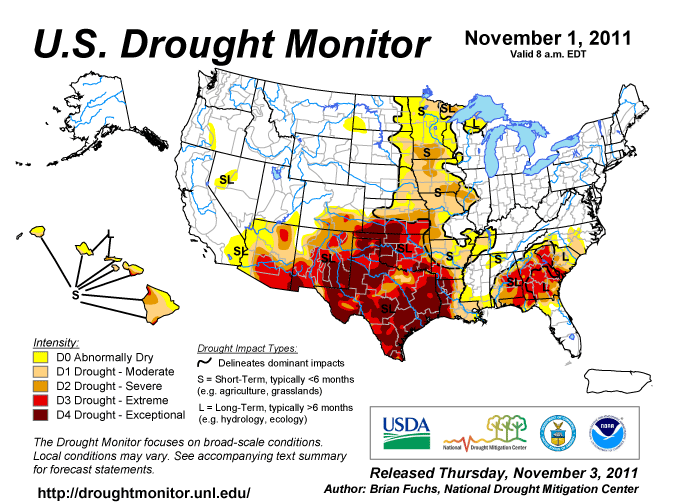Drought Worsens in Midwest; Some Relief in Southern Plains

This week's National Drought Monitor notes dry conditions were seen across the Midwest last week, speeding harvest, but increasing moisture needs before winter. Much of the region has experienced very dry conditions over the last 60-90 days and this week was no different. The monitor reflects 86% of Iowa is covered in drought and 44% of the Midwest is under drought.
"In Iowa, D2 was expanded in the south central and north central portions of the state. Southwest Iowa saw D1 introduced and D0 was expanded in the northeast part of the state. Minnesota continued to be dry, especially along the northern border where D1 was expanded to the west this week," states the monitor. "Southern Minnesota had D2 conditions expand and the area in central Minnesota that was drought free had D0 introduced this week as the remnants of heavy rains in August have diminished. In Missouri, D1 was expanded to all of the northwest part of the state while D0 conditions were introduced in central Missouri."
Meanwhile across the Southern Plains, significant rains were seen over portions of Oklahoma and the Texas panhandle last week, which allowed for improvements to the overall drought situation this week. "The D4 conditions in eastern Oklahoma were improved to D3. In southern Oklahoma, Jefferson County was improved to D2 this week, while Clay, Jack, Wichita and Archer counties in Texas also saw a categorical improvement in response to recent rains. In the Texas panhandle, D4 conditions were improved to D3 where the most significant rain has been recorded over the last 60 days. Improvements will be slow in both Oklahoma and Texas as 86 percent of Oklahoma’s and 89 percent of Texas’ pasture and range lands are in poor to very poor condition. In Texas, 88 percent of the topsoil is rated short to very short this week as well," it states.
Over the next five days (November 2-6), it looks to be a very active weather pattern with precipitation chances over most of the United States. The greatest amounts are forecast over the Midwest, Pacific Northwest, and North Carolina. Temperatures are expected to be well below normal over the western U.S., where departures are expected to be 6-9 degrees Fahrenheit below normal. Warmer than normal temperatures are forecast over the Great Lakes, where departures are 3-6 degrees Fahrenheit above normal.








